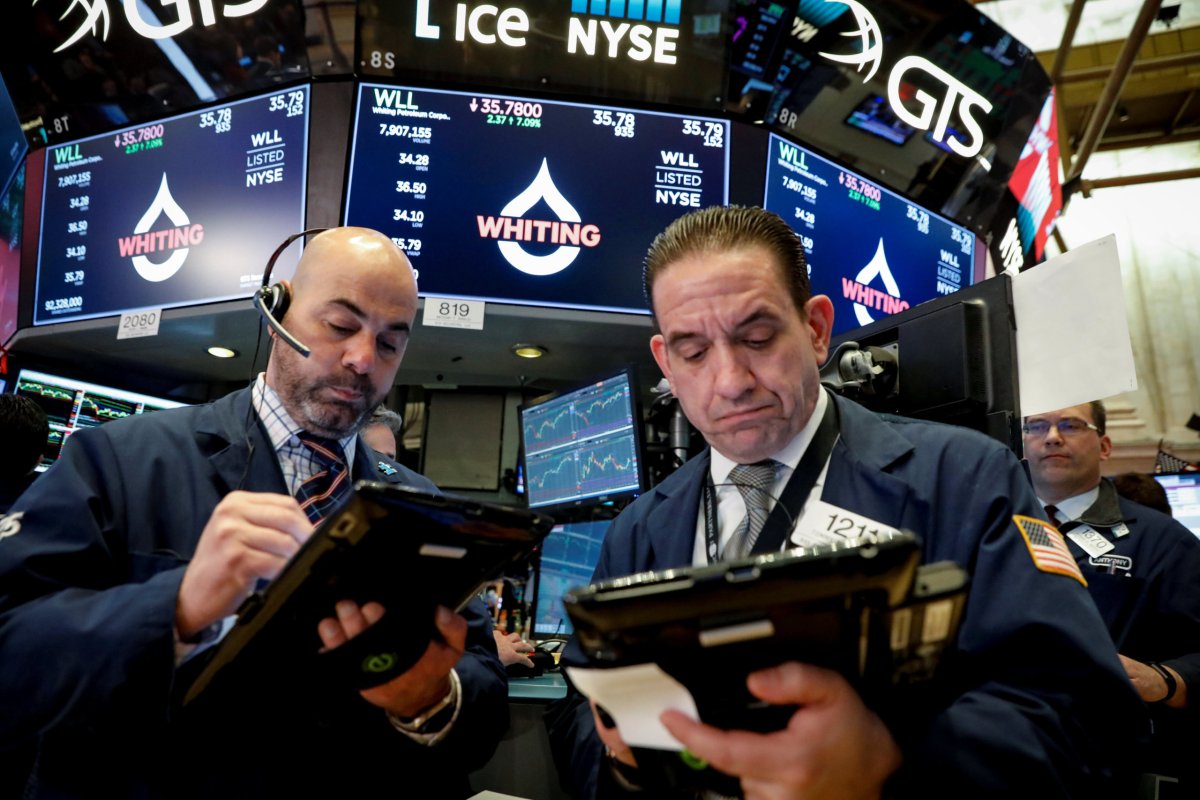By Rodrigo Campos
NEW YORK (Reuters) – A gauge of stocks across the world eased on Friday but was on track to end the week with its strongest performance in five, while oil prices extended recent gains that drove them to highs not seen since late 2014.
Banks stocks led Wall Street lower, with JPMorgan Tax cuts are expected to help corporate America post its biggest quarterly profit growth in seven years. Earnings at S&P 500 companies are estimated to grow by 18.4 percent from a year earlier. “Even with great earnings, maybe the expectations were so high that they are not propelling the market further,” said Jim Awad, senior managing director at Hartland & Co in New York. “Good earnings are already priced into the market.” The Dow Jones Industrial Average <.DJI> fell 207.06 points, or 0.85 percent, to 24,275.99, the S&P 500 <.SPX> lost 15.74 points, or 0.59 percent, to 2,648.25 and the Nasdaq Composite <.IXIC> dropped 55.25 points, or 0.77 percent, to 7,085.00. The pan-European FTSEurofirst 300 index <.FTEU3> rose 0.10 percent and MSCI’s gauge of stocks across the globe <.MIWD00000PUS> shed 0.31 percent.
In emerging markets, stocks lost 0.70 percent.
Overnight, MSCI’s broadest index of Asia-Pacific shares outside Japan <.MIAPJ0000PUS> closed 0.24 percent lower, while Japan’s Nikkei <.N225> rose 0.55 percent.
Global investors seemed to focus on the lack of a clear sign that any U.S.-led attack on Syria was imminent, but the prospect of Western military action in Syria that could lead to confrontation with Russia hung over the Middle East. Oil prices rose on support from lingering concerns about geopolitical risk and reports of dwindling global oil stocks.
“The geopolitical jitters just keep getting priced in here more and more, as we get closer to the moment of the strikes, if there are any,” said John Kilduff, partner at hedge fund Again Capital Management. He noted that Syria poses a large risk to global stability because of its relationship with powerful oil producers. “Syria is a client state of both Russia and Iran and the risk for escalation is quite high and I think that is what the market is worried about.”
U.S. crude Trade tensions also were not far from the surface, with analysts at Citi noting prolonged uncertainty will likely hurt open Asian economies such as Taiwan, Singapore and South Korea.
The Hong Kong Monetary Authority stepped into the currency market and bought another HK$3.038 billion ($387.01 million) in Hong Kong dollars on Friday as the local currency hit the weaker end of its trading range. The U.S. dollar hit a seven-week high against the Japanese yen. The yen tends to benefit from geopolitical uncertainty and risk aversion.
The dollar index <.DXY> rose 0.01 percent, with the euro The Japanese yen strengthened 0.03 percent versus the greenback at 107.31 per dollar, while Sterling Aluminum hit a six-year high on Friday and posted its biggest weekly gain since the current contract was launched after the United States imposed sanctions on Russia’s UC Rusal <0486.HK>, the world’s second-biggest producer. London Metal Exchange aluminum Spot gold Copper In sovereign debt markets, the U.S. Treasury yield curve hovered at its lowest level in more than decade as short-dated yields have risen more than longer-dated ones this week on expectations of further interest rate increases from the Federal Reserve. (GRAPHIC: U.S. yield curve flattest in a decade – http://reut.rs/2CkkWKx)
Benchmark 10-year notes (Reporting by Rodrigo Campos, Caroline Valetkevitch, Richard Leong, April Joyner and Jessica Resnick-Ault in New York, Jan Harvey in London and Sruthi Shankar in Bengaluru; Editing by Dan Grebler)



















